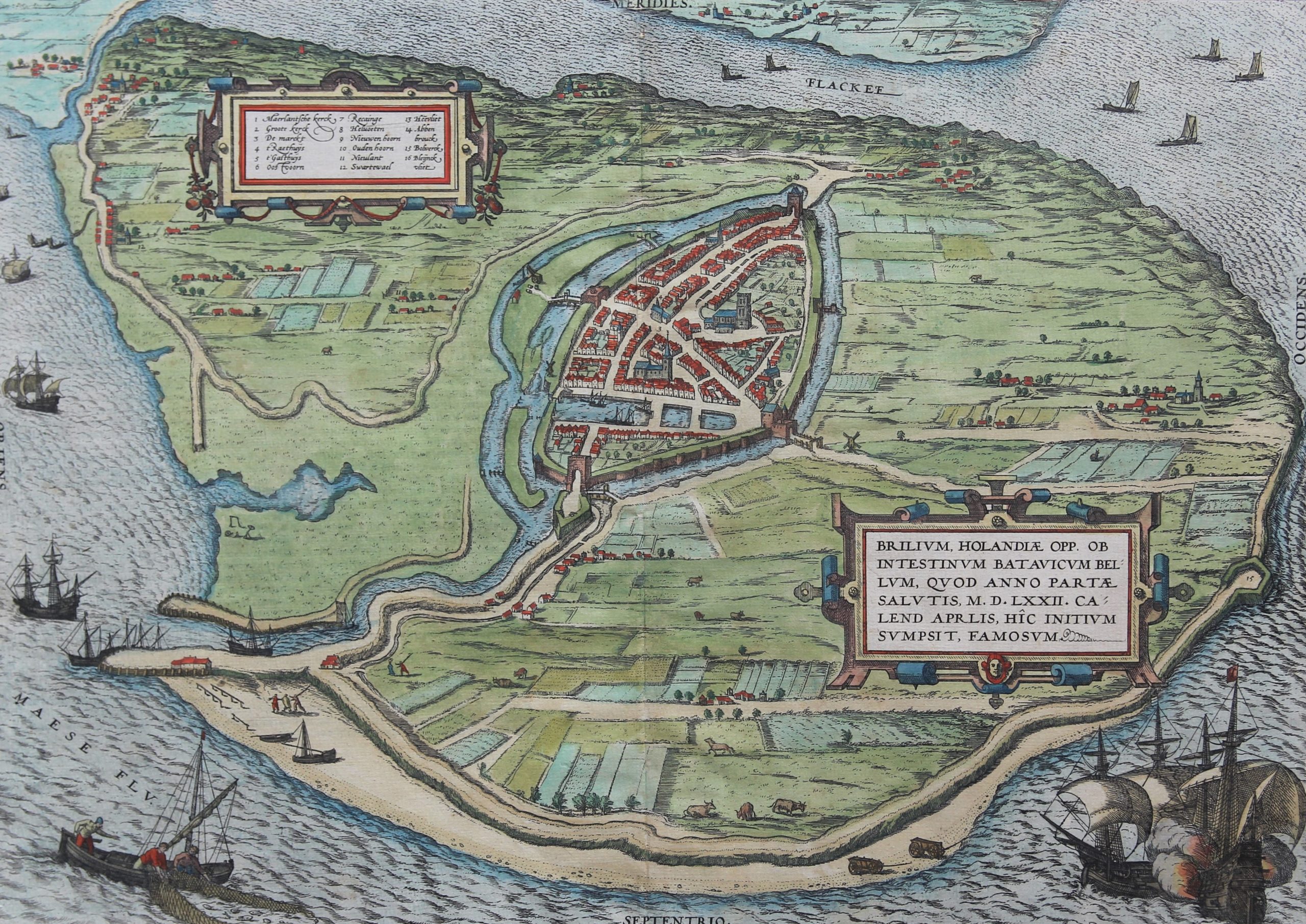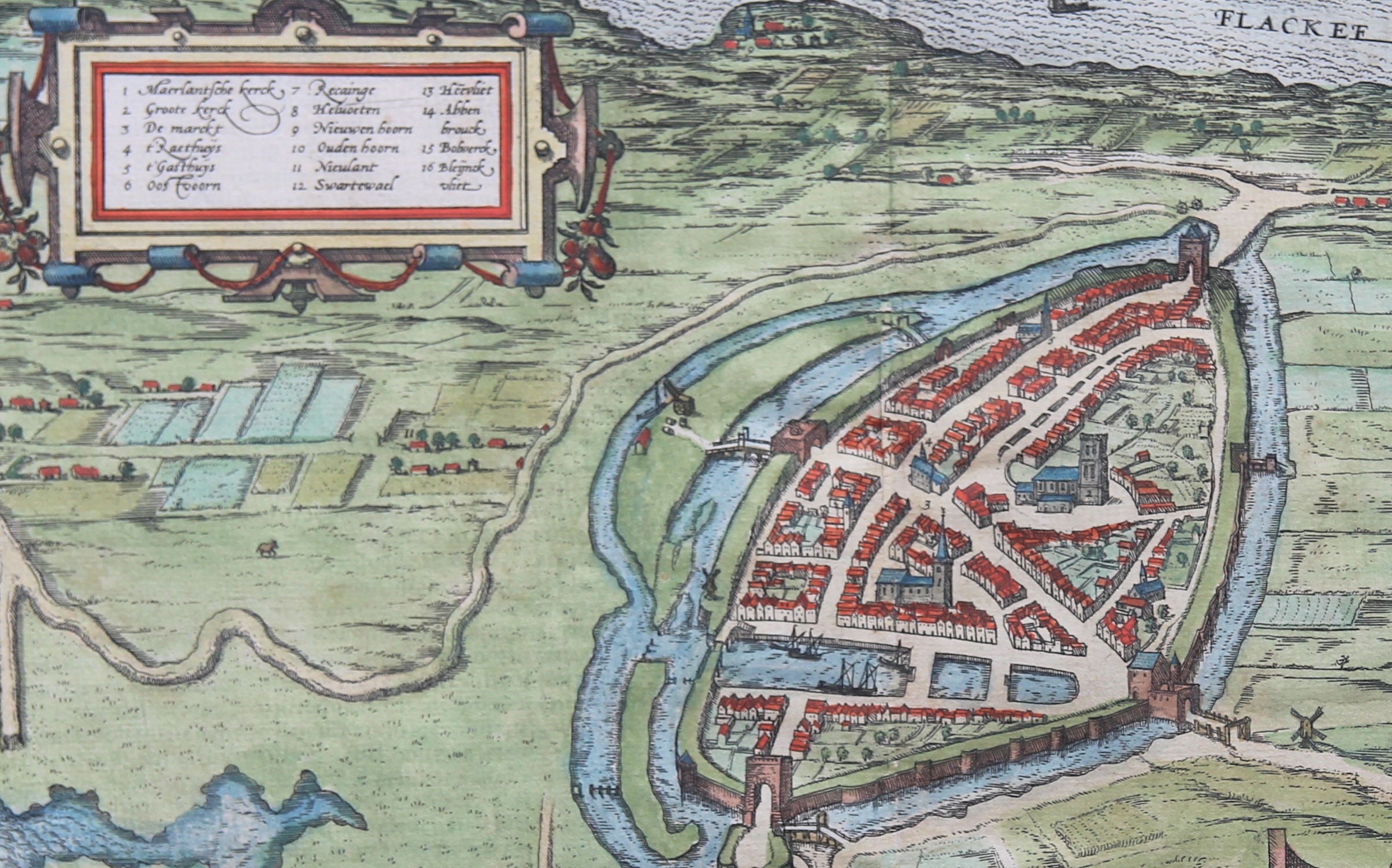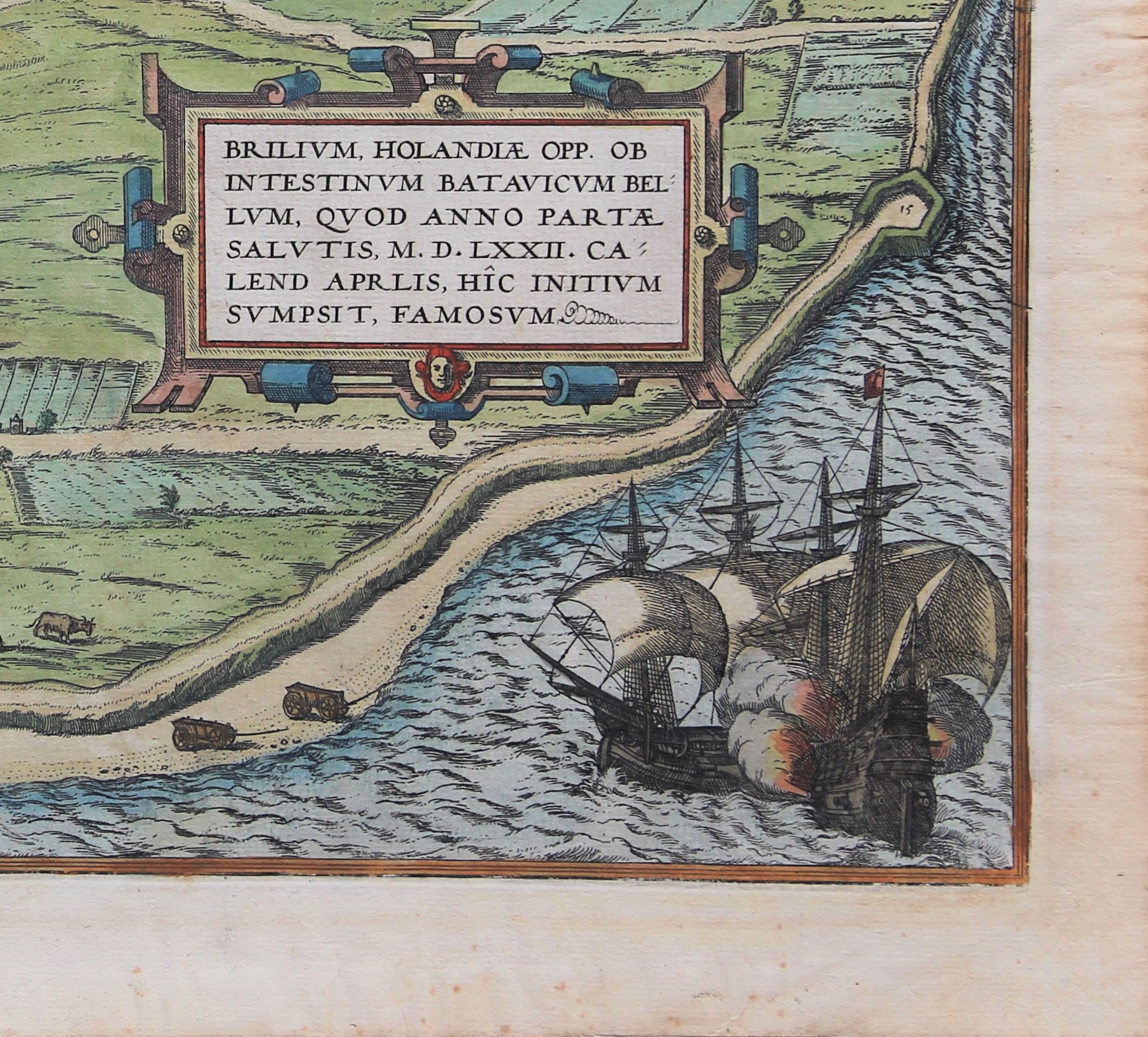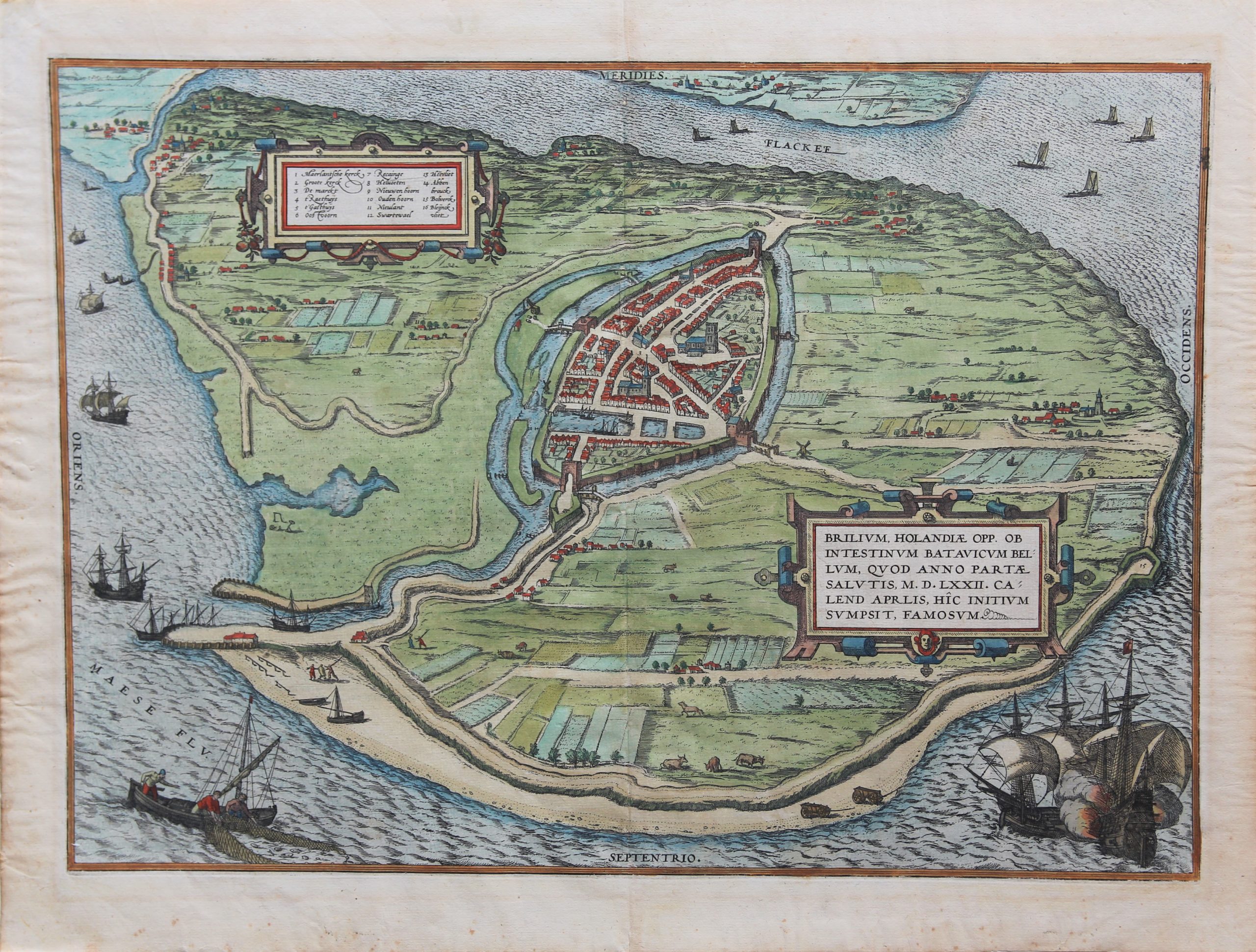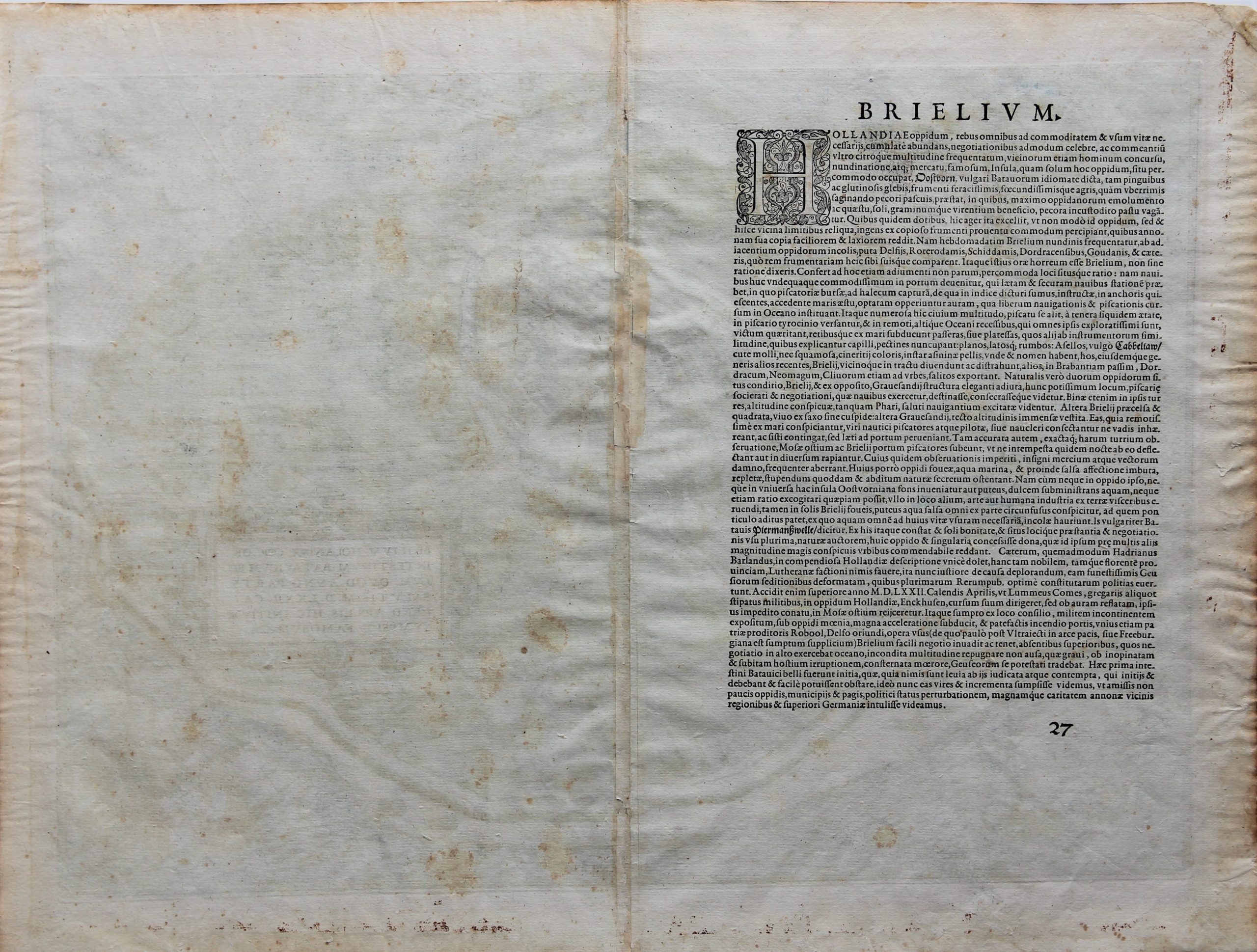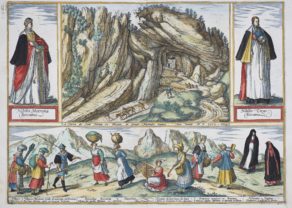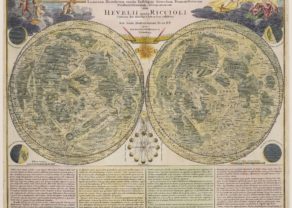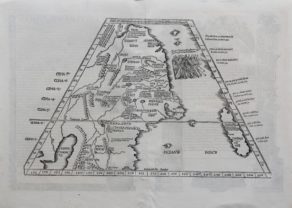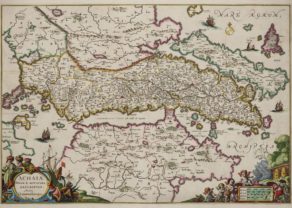Den Briel (Brielle)
The first town taken by the rebels in 1572
Detail
Date of first edition: 1575
Date of this edition: 1575
Dimensions (not including margins): 35 x 49 cm
Dimensions (including margins): 41,3 x 54,6 cm
Condition: Good. Sharp copper engraving printed on paper. Centre fold is as published. Old hand coloured. Wide margins. Traces of previous framing at back. Minor repair at top left corner of margin.
Condition rating: A
Verso: text in Latin
Map reference: van der Kroght IV, 2(1), 643 (first state); Taschen, Br. Hog., p. 162.
From: Civitatis Urbis Terrarum (II: De Praecipuis, totius universi urbibus, liber secundus), first published 1575, this edition 1575, Köln. Van der Krogt IV,2(1) 41:1-3, page 27
In stock
Den Briel (Brielle) commented by Braun
“Most of the inhabitants of Brielle earn their living by fishing, which they carry on from their youth in the North Sea, where they catch chiefly plaice and cod, which are then processed in Brielle and the surrounding towns.”
Translation of cartouche text: Brielle, a town in Holland, well known because of the civil war in Batavia, which began here at the beginning of April 1572.
Full title: – Brillium, Holandiae opp. Ob Intestinum Batavicum Bellum…
Taschen on Brielle
This bird’s-eye view shows the topographical situation of the Island of Voorne at the mouth of the River Meuse. The economic importance of fishing here is underlined by the fishermen in the lower left-hand corner of the plate. The sea-battle (bottom right) is a reference to Brielle’s role in the Dutch Revolt: on 1 April 1572 Brielle – formerly anglicized as Brill – was the first town to be taken by the rebels, the Watergeuzen. The first day of April is still celebrated today as Liberation Day. However, in August 1585 Brielle was given to Queen Elizabeth I of England as a security in the Treaty of Nonsuch, in exchange for 5,000 English soldiers to help fight the Spanish troops. The pledged areas were not returned to the Netherlands until 1616.
